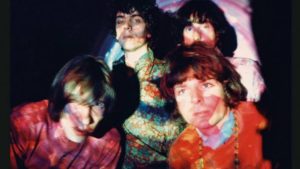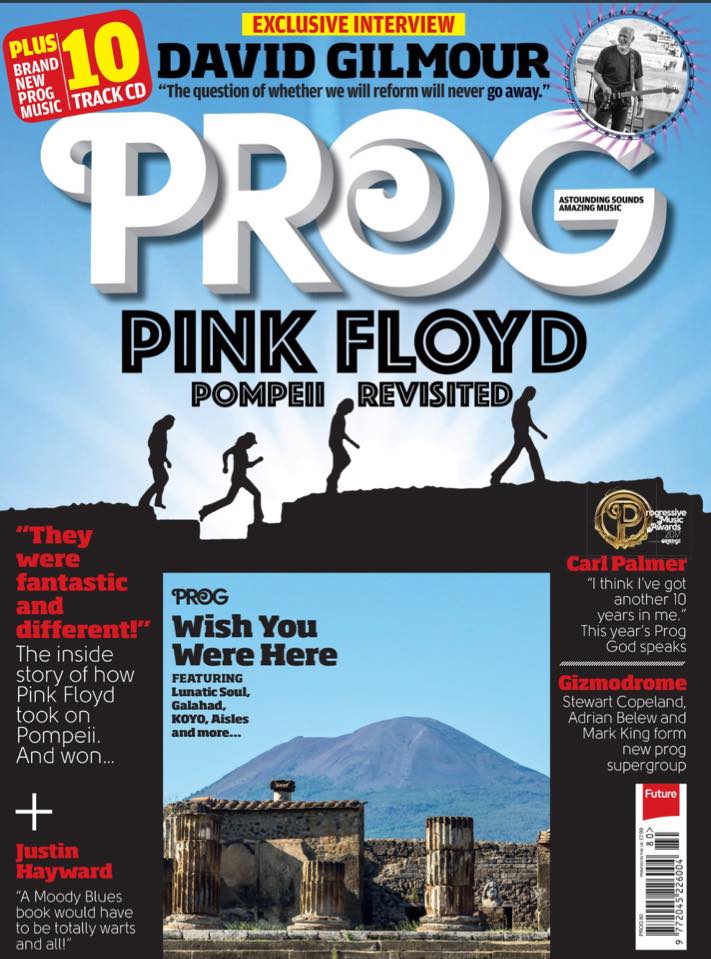 As part of the Edinburgh Fringe festival 2017, The very legendary Guy Pratt took his highly acclaimed Inglorious Bassterd show to the captial for a 2 week residency at Frankensteins Bier Keller from the 14th – 27th September.
As part of the Edinburgh Fringe festival 2017, The very legendary Guy Pratt took his highly acclaimed Inglorious Bassterd show to the captial for a 2 week residency at Frankensteins Bier Keller from the 14th – 27th September.
On the 23rd September 2017, A Fleeting Glimpse headed down Edinburgh to catch the show.
Having braced the thousands of tourists on the street you find yourself at the very gothic and momentous Frankenstein bar, The bar has 3 floors and is based in an 19th century church complete with horror themed decoration, electric static charges, vats of bubbling liquid and the original black and white Frankenstein movies being played on large screens above the middle floor bar.
The show is to take place in the venues bottom floor which is named The Bierkellar and serves the finest traditional German Beer.
The Bierkeller is a very cosy and initmate room, Filled with wooden tables and seating across the floor and a stage on the far wall, its exactly what you imagine a comedy club to be like.
The show is due to start at 5pm promptly and as there is no ticket allocation it is on a first come first served basis.
Interestingly enough the crowd was of an older generation and to much surprise there was only one member of the audience sporting a David Gilmour Rattle That Lock 2015 tour shirt, it was only after watching the show you start to wonder if many people knew Guy through his book or through his long extensive musical career.
Having read his book entitled Guy Pratt : My Bass And Other Animals which was released in 2007 it gave a good indication of the humour and personality that you are about to view before your eyes in the show.
With a ‘Phoenix Nights : Les Alanos’ type introduction over the tannoy out comes the man of the evening, Smart but casually dressed in an unintentionally matched bass guitar coordinated outfit guy makes the first serious but humour filled statement “For all you people out there thinking i am sniffing my nose because i am on cocaine you are wrong. Since being here i have caught a nasty cold, but if you feel it might enhance the rock n roll experience you can tell your friends its cocaine if you like.”
With that out of the way and laughter from the audience it was straight onto show time.
The performance was very carefully constructed with a time period story telling type narrative working back from present day right back to the early 80s.
With a reference to the town and venue that the show was taking place in, Guy starts telling the tales of trip advisor and the reviews of the Frankenstein bar itself “Hollywood in Scotland” to something like “We ordered foot and waited for an hour and this just was not acceptable”.
As you might expect there were a lot of Pink Floyd and David Gilmour references. (Guy has asked for me not to mention a couple of them as he wanted to keep the show contained)
We are told stories about when Guy’s upbringing and how he became interested in the musicians world, One funny tale was his explanation of featuring in a lot of punk bands due to the fact nobody else wanted to play bass guitar “Everyone had these punk rock names, Jonny Fingers, Mad Mike and when i got asked my name … Guy Pratt, everyone thought it was brilliant”
Of course the show doesn’t just feature one man standing at a microphone, The narrative is purely based around music and it does indeed as you would expect incorporate Bass and Electric guitar playing.
There is something about seeing a musician you have been following on DVD’s and Gigantic tours that becomes quite magical, being in a very intimate setting and only a stones throw away hearing the stories and seeing the iconic bass lines being played in front of you. It draws you in and makes you feel a part of the whole thing and from the perspective of the viewer some moments really make your hair stand on end.
Like many good things Guys run of shows at the festival have sadly come to an end.
 But dont worry the show continues on the 21st of September at 19:00–23:30 at Juju’s Bar and Stage, 15 Hanbury Street, E1 6QR London, United Kingdom, Tickets are priced at £14.50 and are available online by clicking here.
But dont worry the show continues on the 21st of September at 19:00–23:30 at Juju’s Bar and Stage, 15 Hanbury Street, E1 6QR London, United Kingdom, Tickets are priced at £14.50 and are available online by clicking here.
For all our readers you really have to see the show, whether you have read the book or not it you cant beat seeing the man himself set the scene and tell the tale.
From us at AFG we really want to thank Guy for his kindness and making us so welcome and say what a brilliant time we had at the show


 The wait is over – David’s Live At Pompeii album / film is OUT NOW on CD, vinyl, Blu-ray, DVD & download!
The wait is over – David’s Live At Pompeii album / film is OUT NOW on CD, vinyl, Blu-ray, DVD & download! On Monday 18th September Nick Mason and Aubrey Powell joined Johnnie Walker to talk about the 50th Aniversary of the 1967 Debut Pink Floyd album The Piper At The Gates Of Dawn
On Monday 18th September Nick Mason and Aubrey Powell joined Johnnie Walker to talk about the 50th Aniversary of the 1967 Debut Pink Floyd album The Piper At The Gates Of Dawn Johnnie was joined by former architecture student and founding drummer with the band – Nick Mason and his friend Aubrey ‘Po’ Powell, who grew up in Cambridge with the original band’s sensitive genius and founding song writer, the late Syd Barrett and David Gilmour (who joined in 1968) and is artistic director of the band, co-founder of Hipgnosis (who designed most of their album sleeves and photography) and curator ‘Their Mortal Remains’, which chronicles Pink Floyd’s entire history at London’s V&A Museum.
Johnnie was joined by former architecture student and founding drummer with the band – Nick Mason and his friend Aubrey ‘Po’ Powell, who grew up in Cambridge with the original band’s sensitive genius and founding song writer, the late Syd Barrett and David Gilmour (who joined in 1968) and is artistic director of the band, co-founder of Hipgnosis (who designed most of their album sleeves and photography) and curator ‘Their Mortal Remains’, which chronicles Pink Floyd’s entire history at London’s V&A Museum. After 63 sold out shows in the U.S. and Canada in 2017, we are excited to announce 5 shows in Germany and 1 show in Austria in the early summer of 2018 followed Portugal through Russia with shows in 21 other countries.
After 63 sold out shows in the U.S. and Canada in 2017, we are excited to announce 5 shows in Germany and 1 show in Austria in the early summer of 2018 followed Portugal through Russia with shows in 21 other countries. As part of the Edinburgh Fringe festival 2017, The very legendary Guy Pratt took his highly acclaimed Inglorious Bassterd show to the captial for a 2 week residency at Frankensteins Bier Keller from the 14th – 27th September.
As part of the Edinburgh Fringe festival 2017, The very legendary Guy Pratt took his highly acclaimed Inglorious Bassterd show to the captial for a 2 week residency at Frankensteins Bier Keller from the 14th – 27th September.
 Prog magazine has announed it is releasing a cover feature and spread to promote David Gilmour : Live At Pompeii.
Prog magazine has announed it is releasing a cover feature and spread to promote David Gilmour : Live At Pompeii.